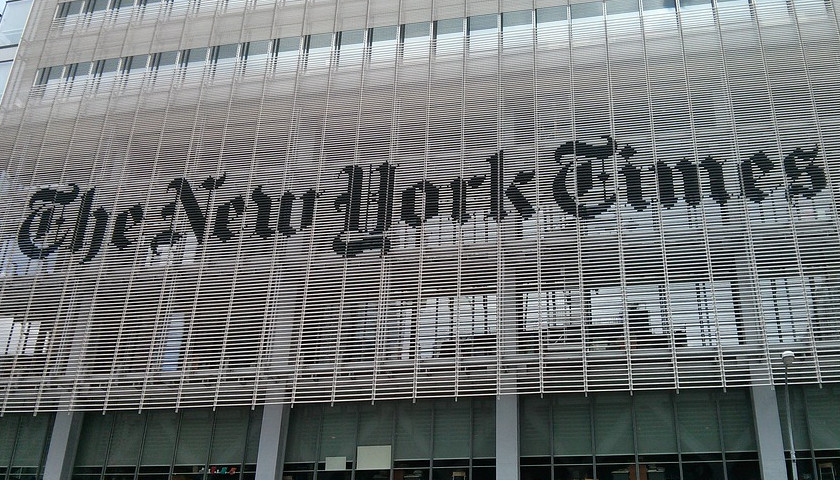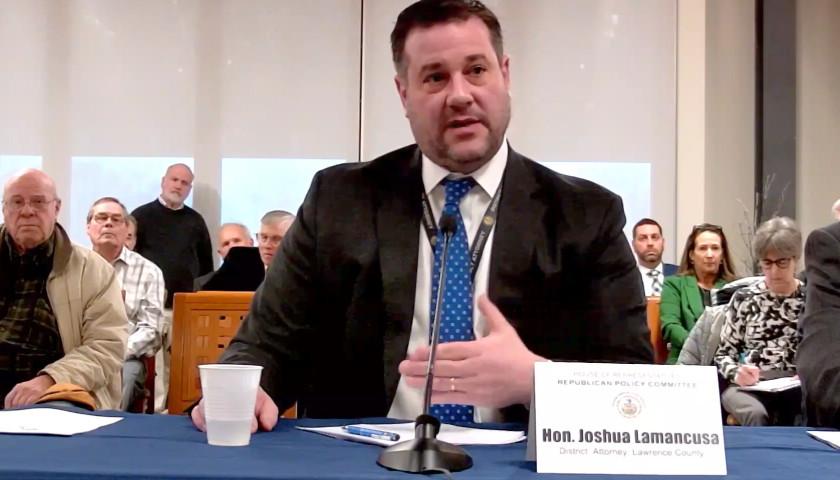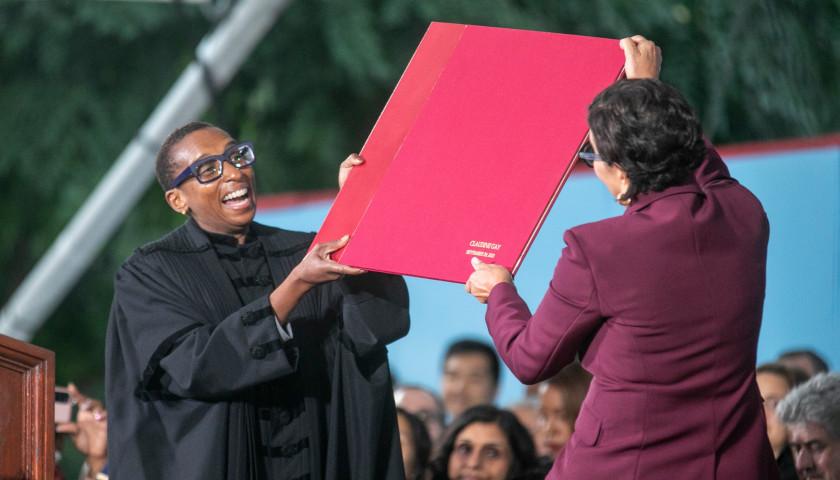by James D. Agresti
This week, the New York Times published an article that gives credence to a fiction that stoked riots in Ferguson, Missouri, sparked the “Black Lives Matter“ movement, and provoked murders of police officers.
In an article entitled “Policing: What Changed (and Didn’t) Since Michael Brown Died,” Times reporter Mitch Smith writes that “dueling narratives quickly emerged after Darren Wilson, a Ferguson police officer, killed” Michael Brown, “an unarmed black teenager.” He then says: “Mr. Wilson said he shot to defend himself and he was cleared of criminal wrongdoing. Some witnesses disputed that version of events and called the shooting unjust.”
That statement is a textbook case of deceit by omission because it fails to reveal that the Obama administration’s Department of Justice investigated this matter and reported:
- Accusations that Brown held up his hands in surrender (“Hands up, don’t shoot”) were either “inconsistent with the physical and forensic evidence,” “inconsistent with the witness’s own prior statements,” or recanted when people in the neighborhood admitted “that they did not witness the shooting” despite what they told the media.
- The pattern of bloodstains in the street prove that Brown was advancing towards Wilson when he was shot.
- Brown’s DNA on Wilson’s collar and on the inside and outside of the driver’s door of Wilson’s car shows that Brown attacked Wilson in his police car.
- No witness gave testimony incriminating Wilson that was “materially consistent with prior statements, physical evidence, and other witnesses.”
- Eight witnesses gave testimony indicating Wilson acted in self-defense that was “materially consistent with prior statements, physical evidence, and other witnesses.”
- Three of the eight witnesses whose testimony vindicated Wilson expressed concern that they would be attacked by their neighborhood for telling the truth about this event, and another witness “blockaded her door with a couch” to avoid appearing before the grand jury.
After giving scant coverage to the facts above, a slew of media outlets and politicians continued to cite the death of Brown as an example of police brutality against African-Americans. Thus, nine months after the Obama administration issued this report, Just Facts commissioned a scientific survey that asked voters:
Did the Obama administration’s investigation of the Ferguson shooting find merit in claims that Michael Brown held up his hands in surrender before he was shot by police officer Darren Wilson?
Nearly two-thirds of voters did not know the correct answer, which is “No.” Instead, 63% replied “Yes” or “I don’t know,” including 81% of Democrats and 42% of Republicans. Those who gave the positively false answer of “Yes” included 27% of all voters, 45% of Democrats, and 12% of Republicans.
Fostered by the media, widespread public ignorance and misinformation about this incident and others have stirred deadly violence against police officers.
Before Ismaaiyl Brinsley murdered New York City policemen Rafael Ramos and Wenjian Liu in 2014, he posted on Instagram: “I’m Putting Wings On Pigs Today. They Take 1 Of Ours….. Let’s Take 2 of Theirs #ShootThePolice, #RIPErivGardner and #RIPMikeBrown. This may be my final post.”
During a 2016 Black Lives Matter protest in Dallas, TX in which the crowd chanted “Hands up, don’t shoot,” Micah Johnson killed five police officers. During standoff negotiations, he said he wanted to kill white people, especially white officers. All of the policemen he murdered were white.
Ten days later, Gavin Eugene Long shot six Baton Rouge, Louisiana police officers, killing three of them. His suicide note stated: “I must bring the same destruction that bad cops continue to inflict upon my people,” meaning people of color.
Nonetheless, the Times and other media outlets keep propagating the canard that Michael Brown was or may have been wrongfully shot. Beyond this specific case, they also distort the larger issue by twisting statistics in ways that slander the police.
A prime example is when the Times editorial board wrote that “many police officers see black men as expendable figures on the urban landscape, not quite human beings.” Their supposed evidence for this statement was a “grim report” from ProPublica showing “that young black males in recent years were at a far greater risk—21 times greater—of being shot dead by police than young white men.” Yet, a month earlier, ProPublica stressed that this data is “terribly incomplete” and is not “proof of police bias” because it is “far too limited to point to a cause for the disparity.”
With regard to such disparities, a 2018 paper in the journal Social Psychological and Personality Science documented:
- “The data are clear that” police shootings generally involve cases where “suspects pose a potentially deadly threat.”
- Because white and black people commit life-threatening crimes at different rates, it is misleading to analyze this issue by comparing “the odds of being fatally shot for blacks to the odds of being fatally shot for whites.” (Yet, this is exactly what the Times editorial board did.)
- The correct way to analyze this issue is to compare the odds of being fatally shot to people’s “involvement in those situations where the police may be more likely to use deadly force.”
- Based on four different national datasets on “murder/nonnegligent manslaughter, violent crime, and weapons violations,” “in nearly every case, whites were either more likely to be fatally shot by police, or police showed no significant disparity in either direction.”
Studies that allegedly show otherwise, like those cited by reporter Wesley Lowery in a 2016 Washington Post article, suffer from flaws that make them meaningless at best and deceitful at worst. For example, Lowery wrote that “black Americans are 2.5 times as likely as white Americans to be shot and killed by police officers,” and studies like one from the Center for Policing Equity prove “there is no correlation between violent crime and who is killed by police officers.” However, the authors of this study buried the following results on its 19th page, and Lowery never mentioned them:
- Police are 42% less likely to use lethal force when arresting blacks than when arresting whites.
- Police are 59% less likely to use lethal force when arresting blacks for serious violent crimes than when arresting whites for serious violent crimes.
Despite the fact that such misreporting feeds false narratives that place police officers in mortal danger, the Times, the Post, and other media outlets have continued to spread this disinformation. Meanwhile, they claim that President Trump is responsible for placing them in danger when he criticizes the “fake news media.”
– – –
James D. Agresti is the president of Just Facts, a think tank dedicated to publishing rigorously documented facts about public policy issues.








